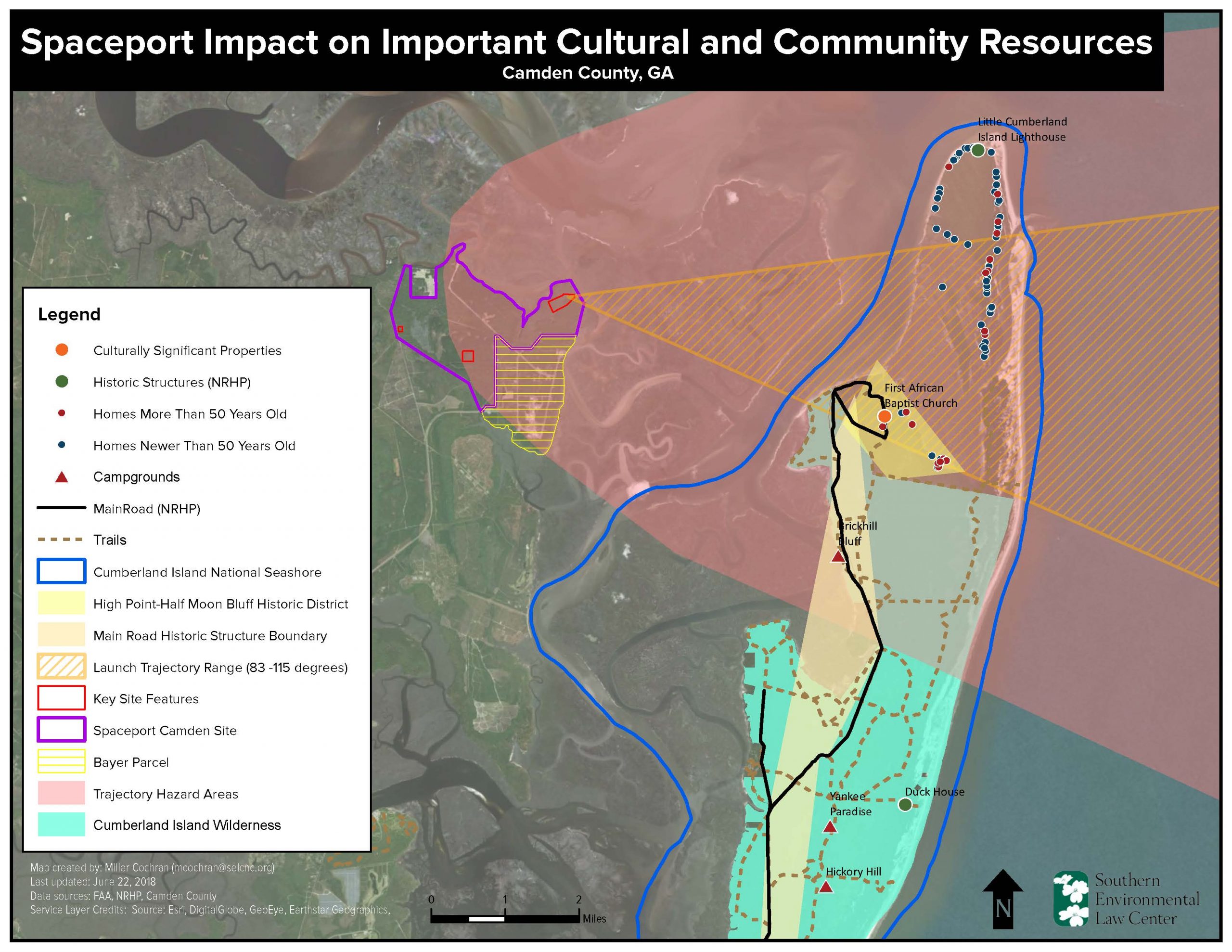Study of Georgia spaceport fails to address health, safety concerns
Camden County, Ga., officials are shooting for the stars as they push forward with plans to build Spaceport Camden, a public-private rocket-launching facility being advanced despite numerous concerns for neighbors and the nearby national seashore.
County officials are not fully considering the project’s risks to the area’s natural resources and public safety,” said Gil Rogers, managing attorney for SELC’s Georgia office. “While we fully support Camden County as it looks to diversify the economy, investing in a poorly-planned project on a toxic site that jeopardizes public safety and the area’s natural resources is not the best path forward. This spaceport also has the potential to jeopardize existing tourism dollars by impacting visitors to Cumberland Island.
The facility would be constructed on the southeastern edge of the coastal county at the site of a former manufacturing facility that had been in use since the 1960s to produce an array of toxic materials, including munitions, teargas and pesticides. The proposed site is in close proximity to invaluable wildlife habitat at the juncture of the Satilla River and the Intracoastal Waterway, and is also near Jekyll, Little Cumberland, and Cumberland Islands.
There are a number of key resources that could be impacted if the proposed spaceport moves forward but the latest federal analysis glosses over many of the concerns.
Impact Zone
While county officials may envision Spaceport Camden as a prime tourist attraction, space flight operations can be unpredictable and at times dangerous. The proposed flight patterns would allow rockets to launch over the homes of nearby residents, the Cumberland Island National Seashore and numerous other sensitive ecological areas. There is also a hazardous waste landfill adjacent to the proposed site. The combination of these factors has led many to express concerns over the potential for possible contamination from fuel and other hazardous materials, threats to water quality, and even serious accidents.
On behalf of the National Parks Conservation Association, One Hundred Miles, Center for a Sustainable Coast, Glynn Environmental Coalition, Satilla Riverkeeper, and Atlanta Audubon Society, SELC recently submitted comments to the Federal Aviation Administration (FAA) criticizing the agency’s draft environmental impact statement (DEIS) for the facility. The study does not properly evaluate the project’s numerous risks and fails to address some impacts at all, contrary to the requirements of federal law.
In addition, the FAA assessment conflicts with communications from Camden County officials about whether restricted access or evacuations would be required on Cumberland and Little Cumberland Islands during launches and engine tests. One way of assuring safety during launches would be to require evacuating the area under the rocket’s path, creating a big disruption for tourists and residents alike.
As it stands, the FAA’s assessment of environmental impacts is woefully inadequate and it glosses over the clear safety and public health risks of launch failure with general, vague assurances that are completely unsubstantiated by any evidence or scientific study,” said Rogers. “We hope that the FAA and Camden County officials will strongly consider the many possible ramifications of Spaceport Camden, and urge the FAA to revisit these issues in greater detail with a more stringent, comprehensive environmental impact statement.
